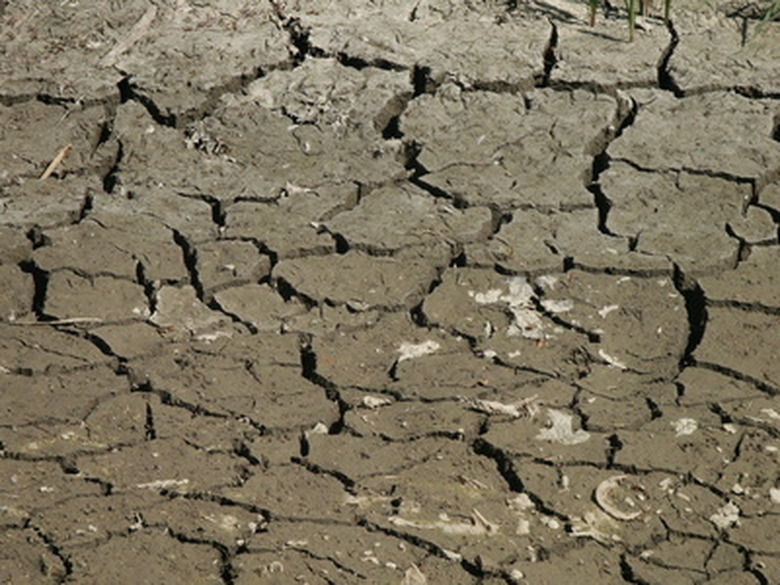Gumbo Gypsum Soil Treatment
Soil that is sticky and full of clay is referred to as gumbo soil. Many plants don't like gumbo soil because it doesn't drain well. Waterlogged soil causes root rot and makes conditions ripe for fungus. To improve gumbo soil in a garden or landscape, homeowners amend it with gypsum. Gypsum is easy to apply, but it is not fast-acting.
How Gypsum Benefits Gumbo Soil
Gypsum travels through the obstructive clay in gumbo soil and changes its structure. The soil becomes less dense. The resulting air and water circulation is important for healthy roots and overall plant health, as are the calcium and sulfur that gypsum contains.
- Soil that is sticky and full of clay is referred to as gumbo soil.
- Gypsum travels through the obstructive clay in gumbo soil and changes its structure.
When gumbo soil receives gypsum over a long period of time, the improved soil structure also encourages populations of earthworms. Earthworms process soil so its nutrients are consumed more easily by plants.
Amending gumbo soil with gypsum does not drastically change its pH like lime or aluminum sulfate; rather, it moves gumbo soil into a neutral zone benefiting a broad range of plant species.
Application Methods and Rates
Apply gypsum yearly to the soil surface at a rate of 40 pounds per 1,000 square feet. Water it in immediately to get it down into the soil. No tilling is required.
Misconceptions
Adding gypsum to gumbo soil does not eliminate the need for organic matter like compost, manure and peat. Decomposed plant material and manure partner with gypsum to create crumbly soil that retains healthy amounts of moisture.
- When gumbo soil receives gypsum over a long period of time, the improved soil structure also encourages populations of earthworms.
Gumbo soil corrected with gypsum and humus does not compact and crack when it dries. It also erodes less quickly.
Time Frame
With yearly applications, it can take three years to reap the full benefits of gypsum application.
Safety
Gypsum is not toxic or caustic to humans and animals. Users should still follow the manufacturer's application guidelines printed on the bag.
Expanded Shale Versus Gypsum
Expanded shale is an alternative to gypsum. It contains high levels of silica. When it is fired in a kiln, the material expands and contracts as it cools. The resulting holes inside the particles create the air and moisture benefits of gypsum combined with various forms of humus. Expanded shale, however, does not decompose.
- Gumbo soil corrected with gypsum and humus does not compact and crack when it dries.
- The resulting holes inside the particles create the air and moisture benefits of gypsum combined with various forms of humus.
References
- "Preparing Garden Soil"; Duane Hatch; 1990
- "SAVE WATER:Expanded shale mixed in soil aids in retention, drainage"; Sara and Alton Meyer; February 26, 2009
